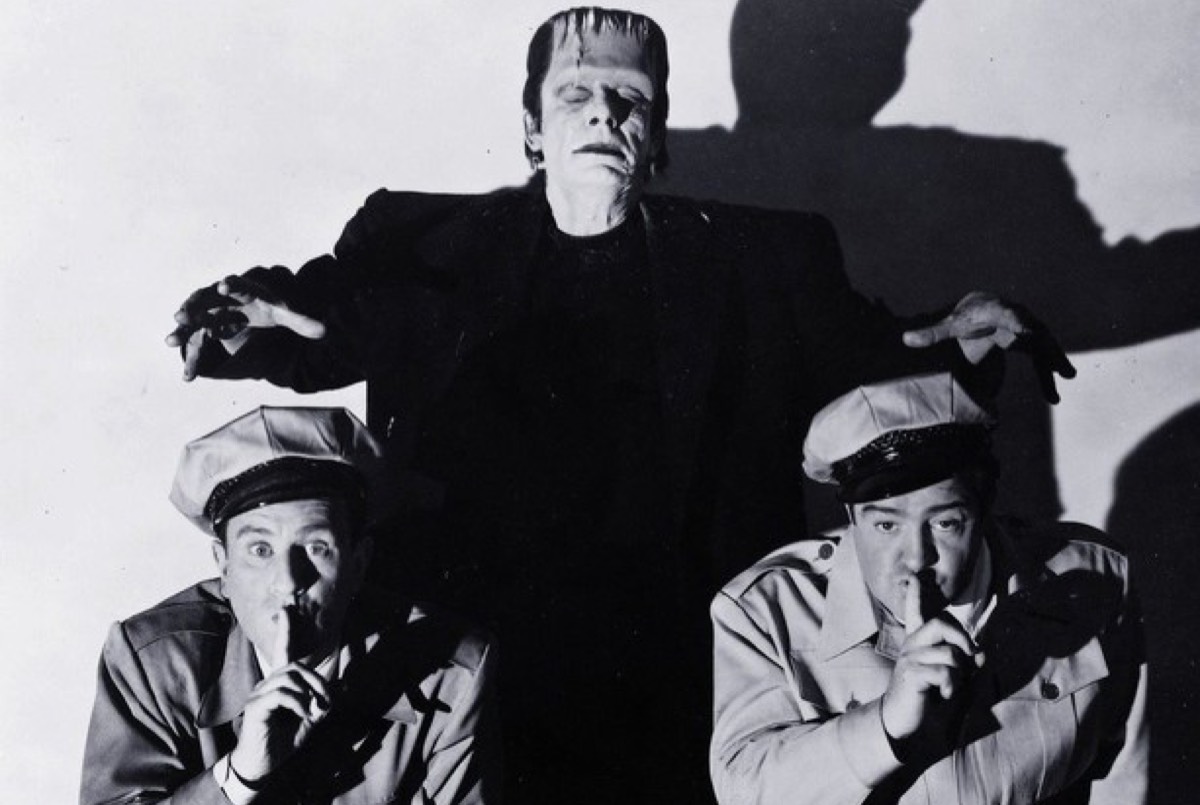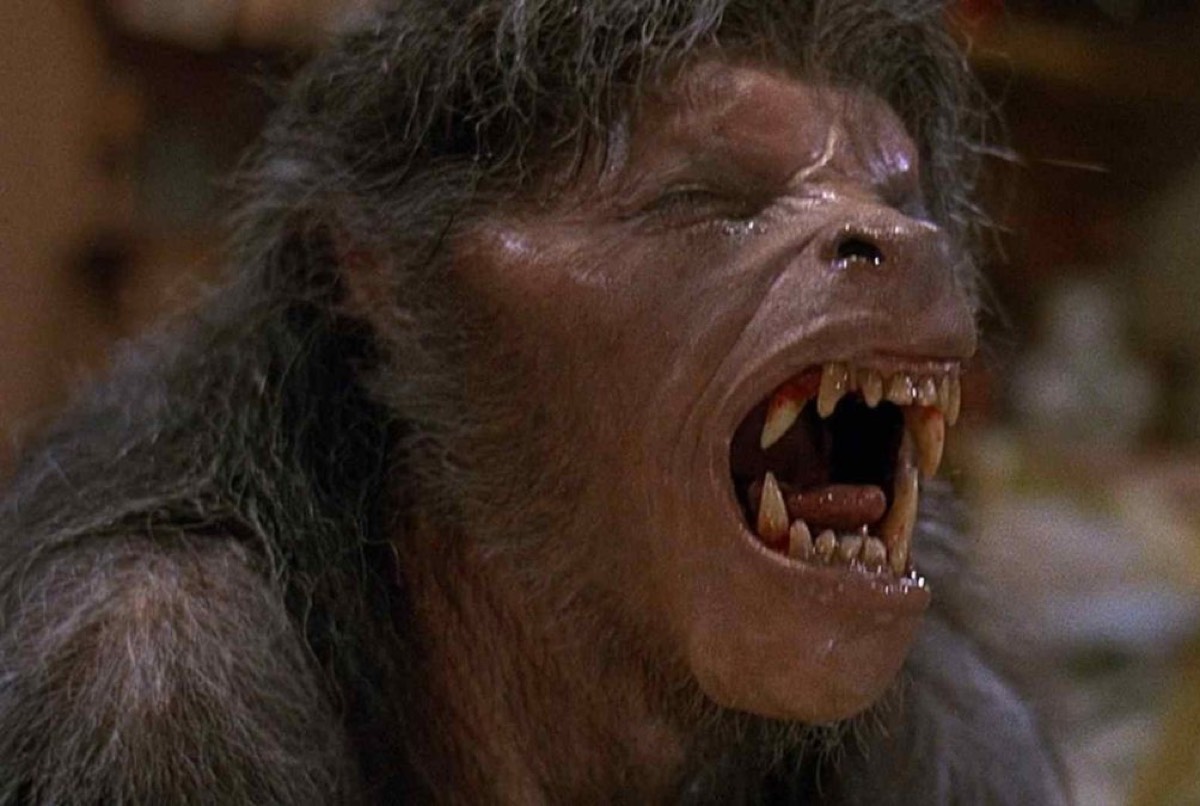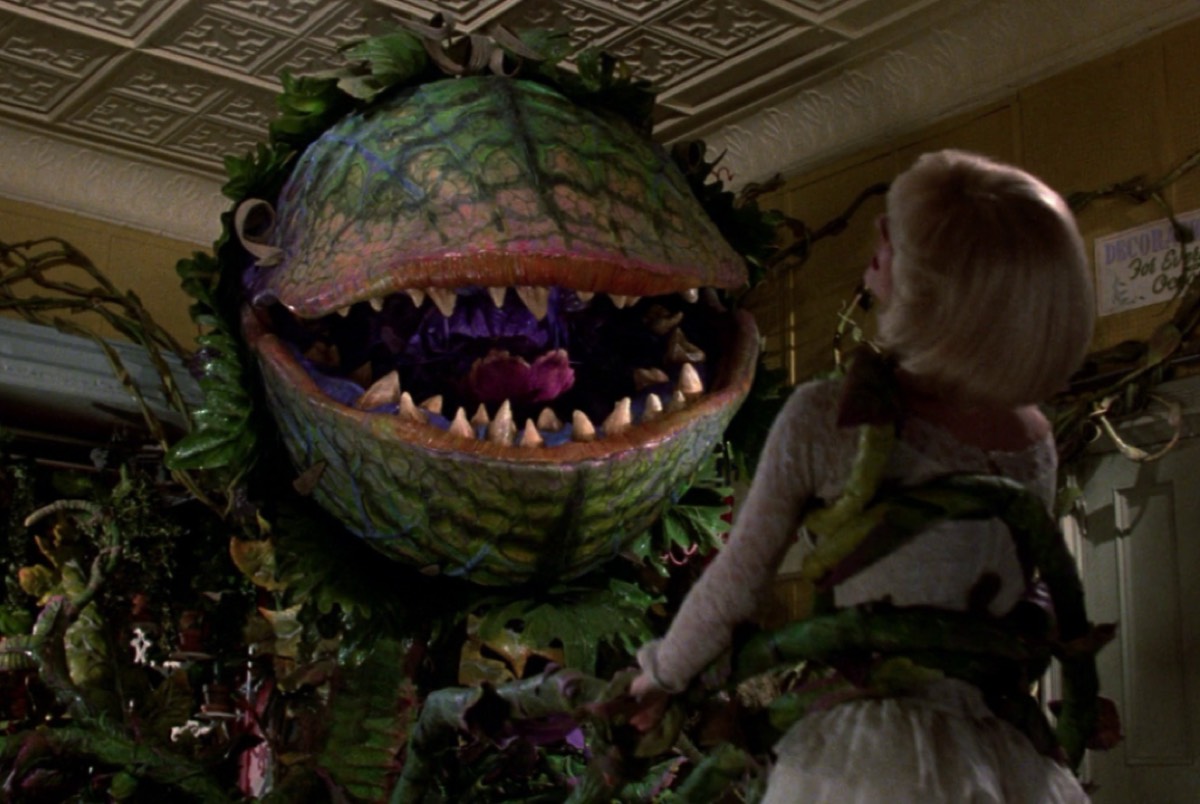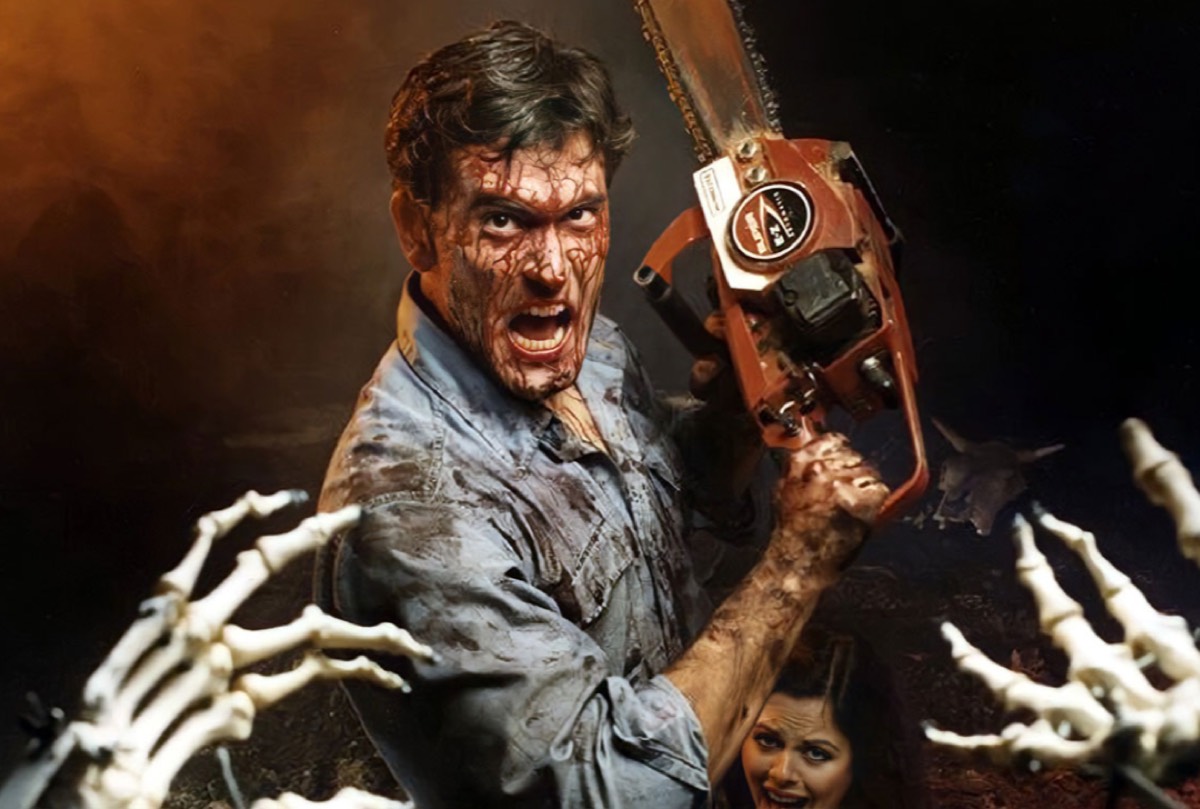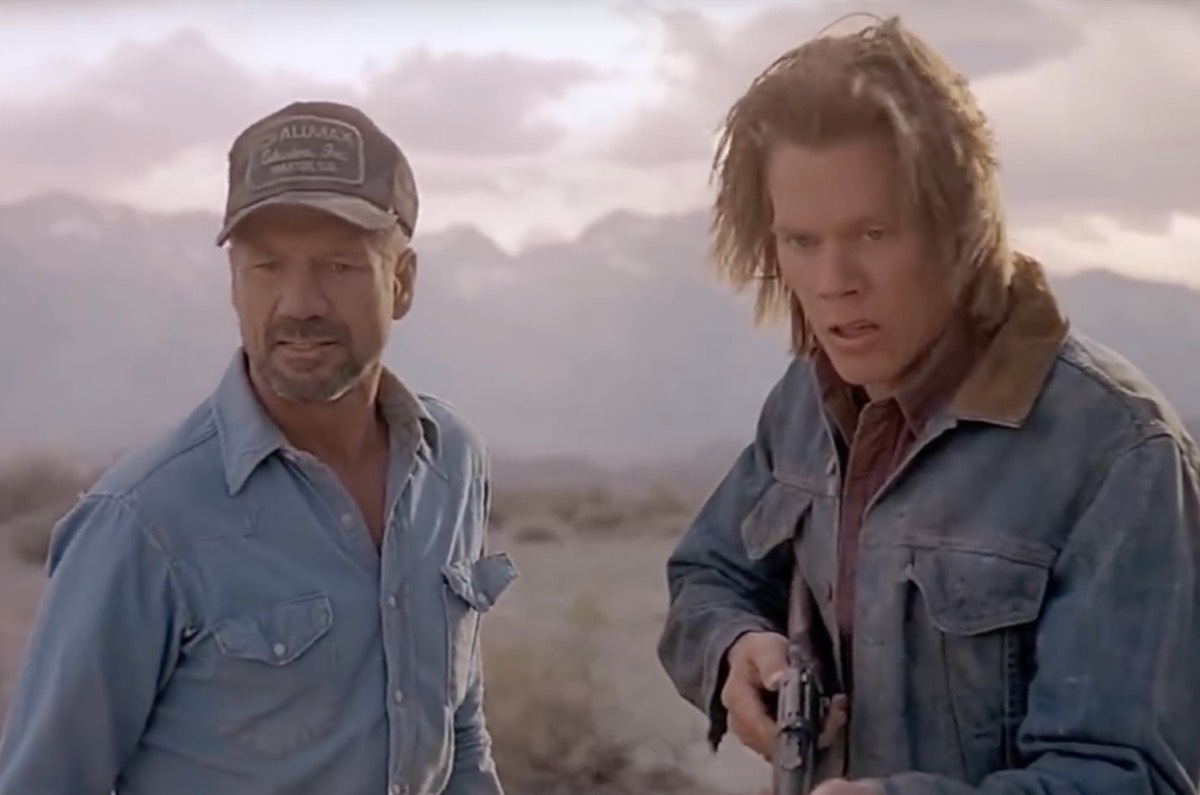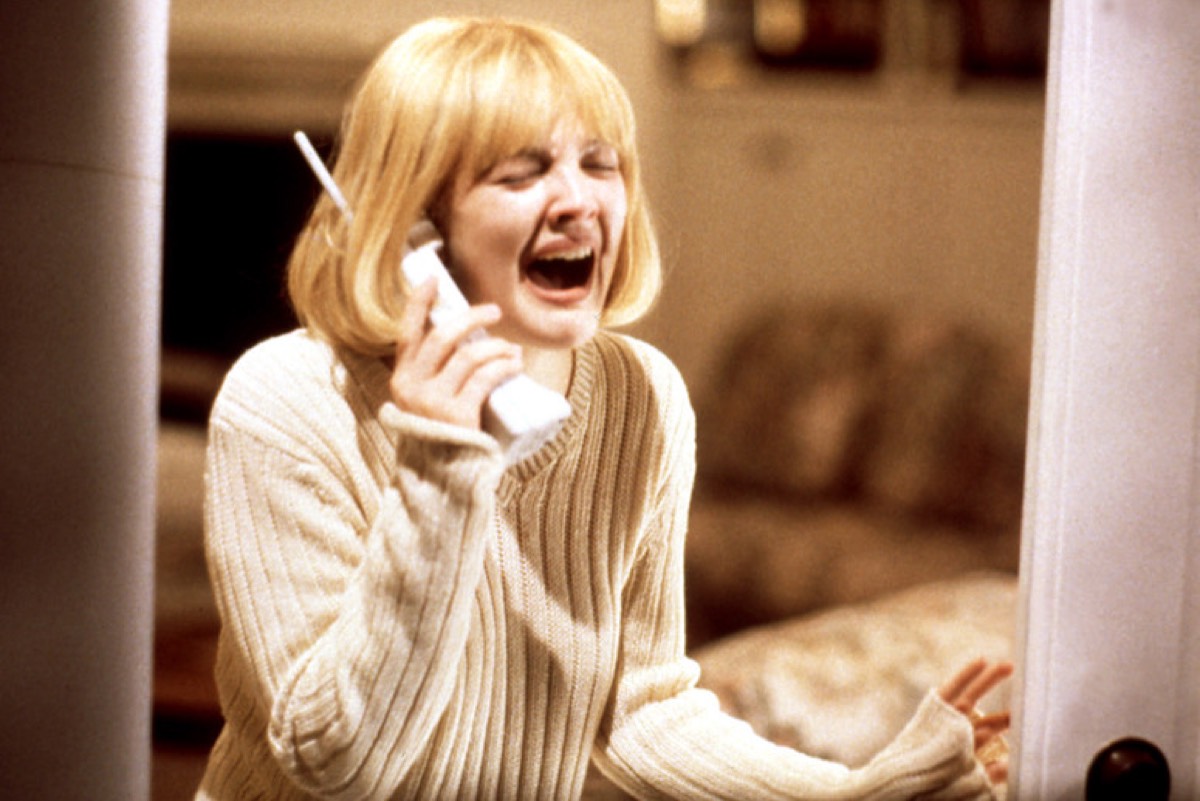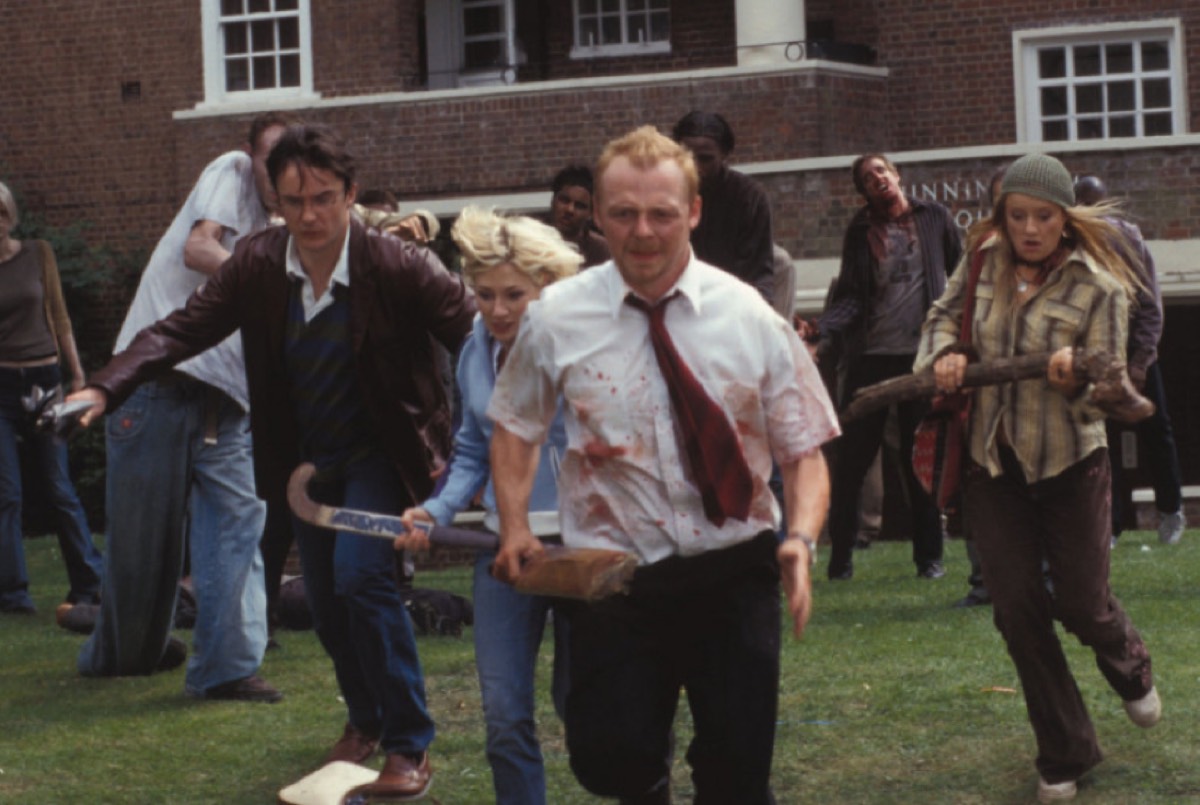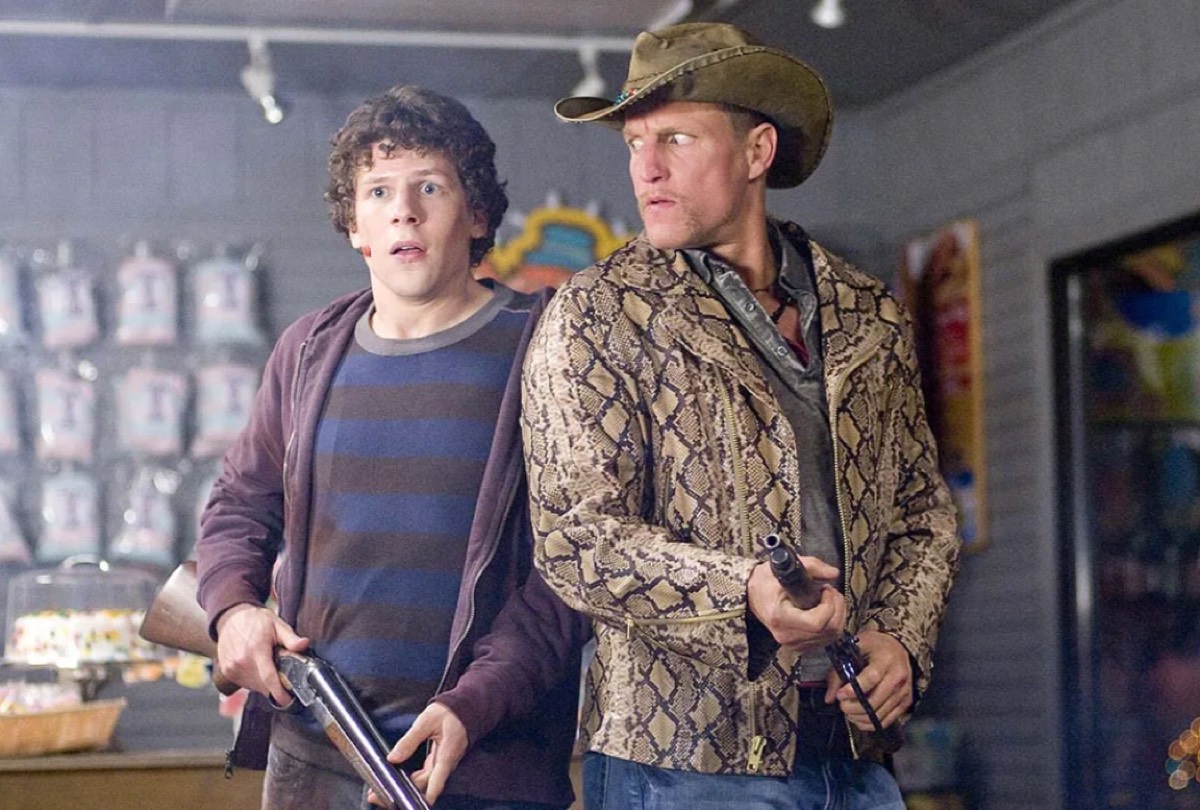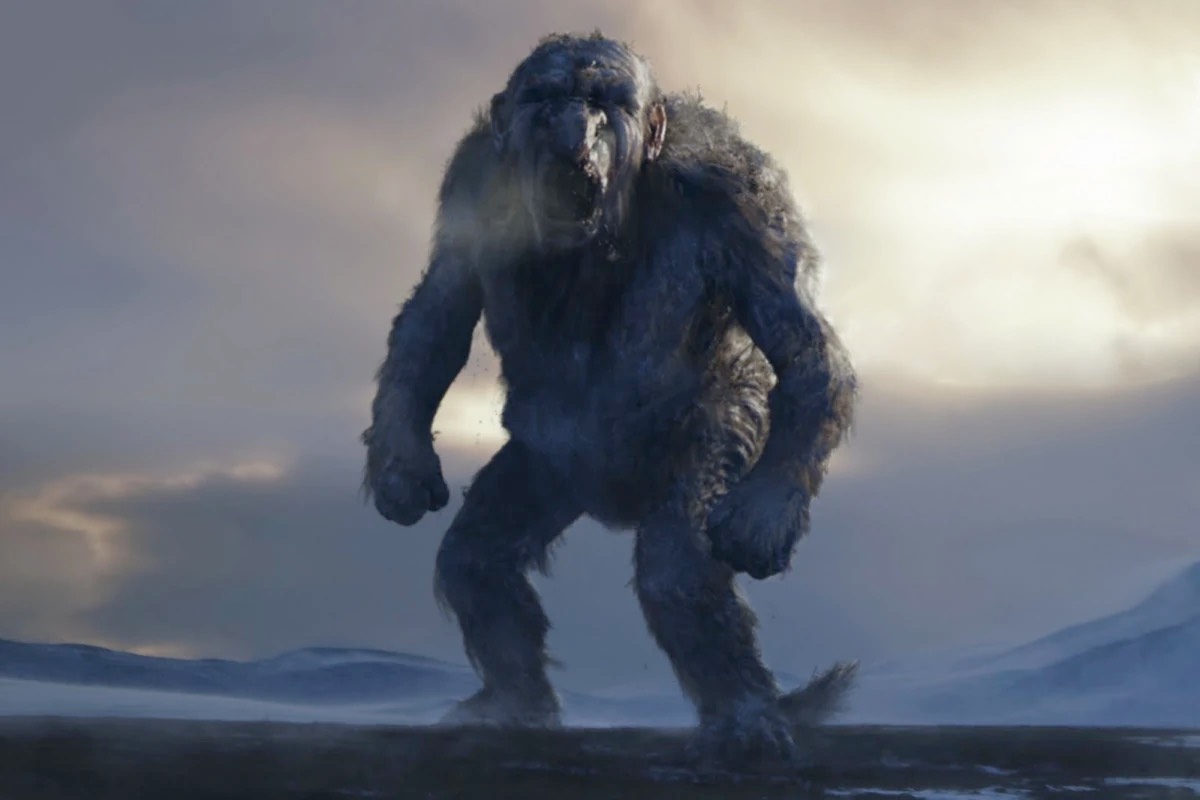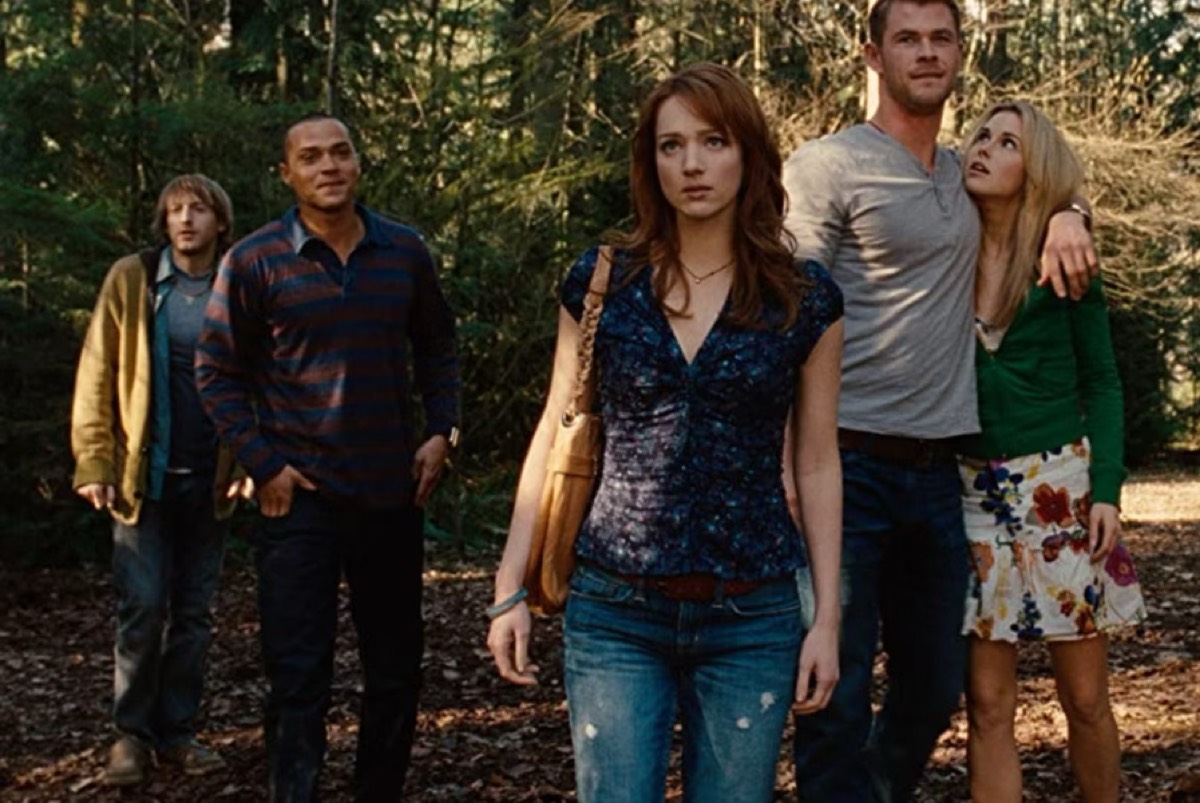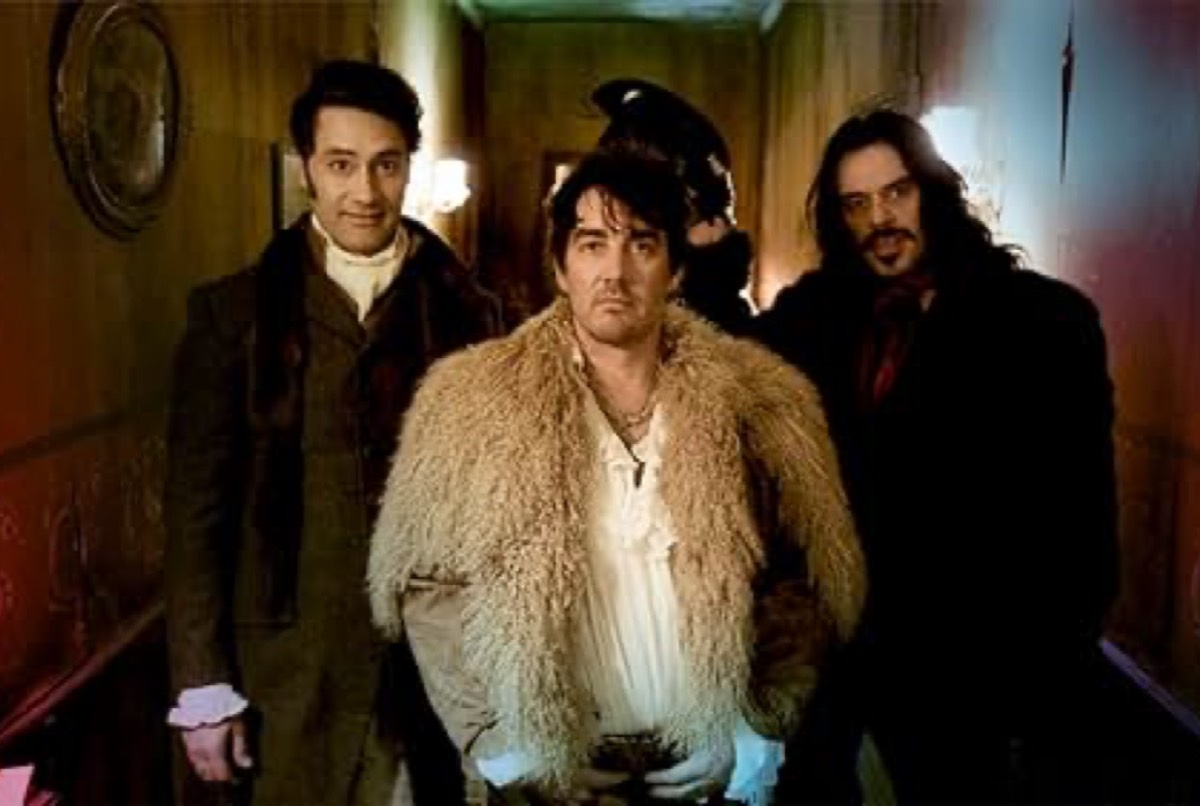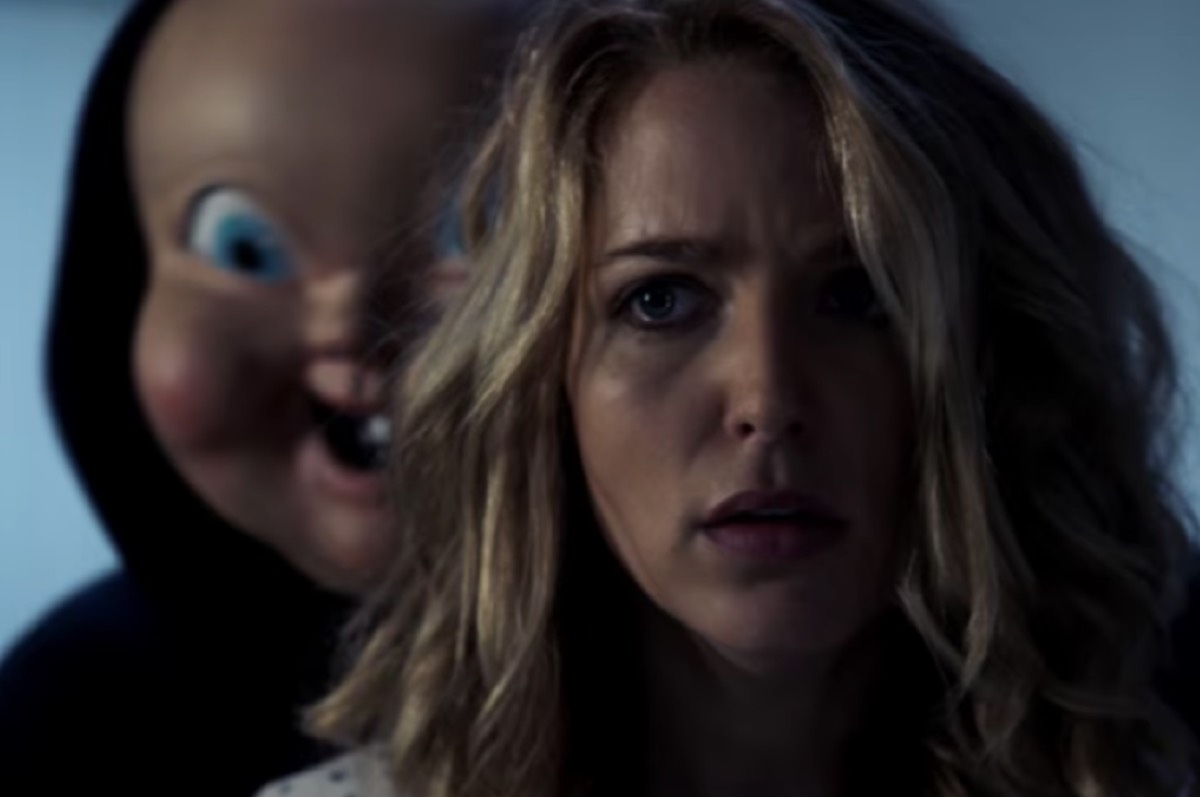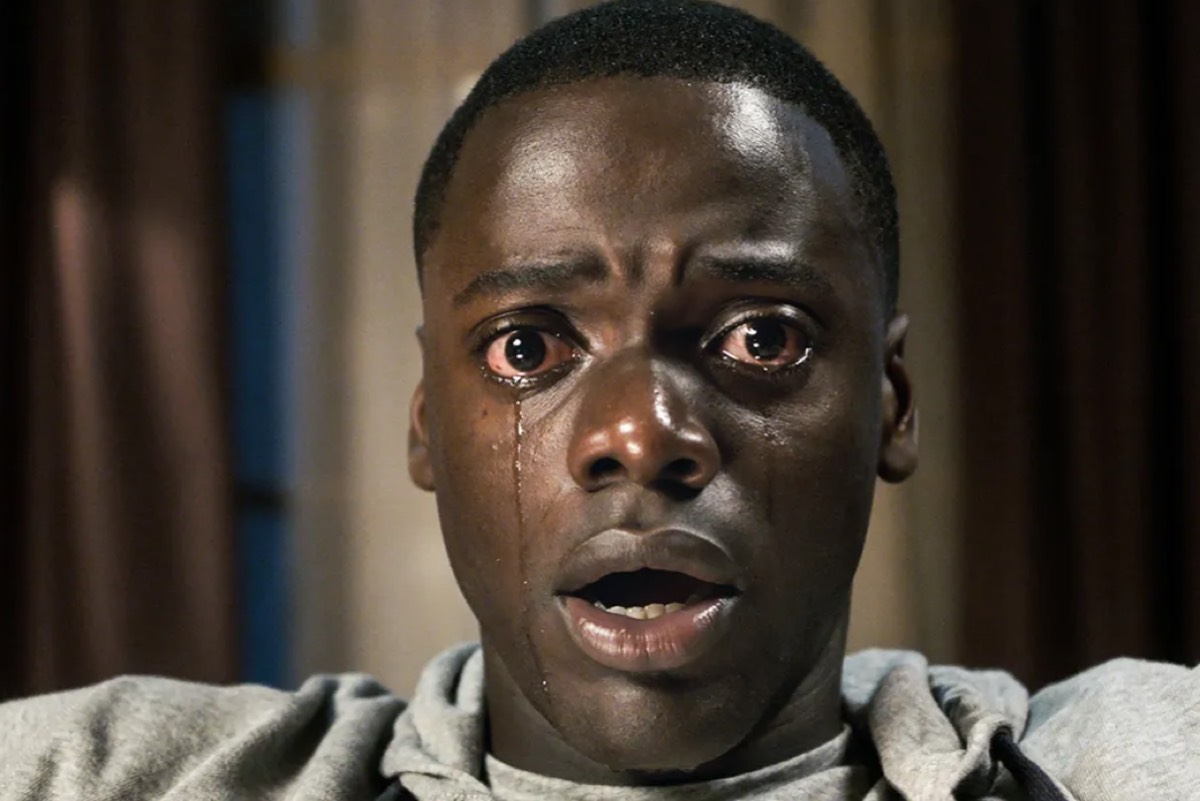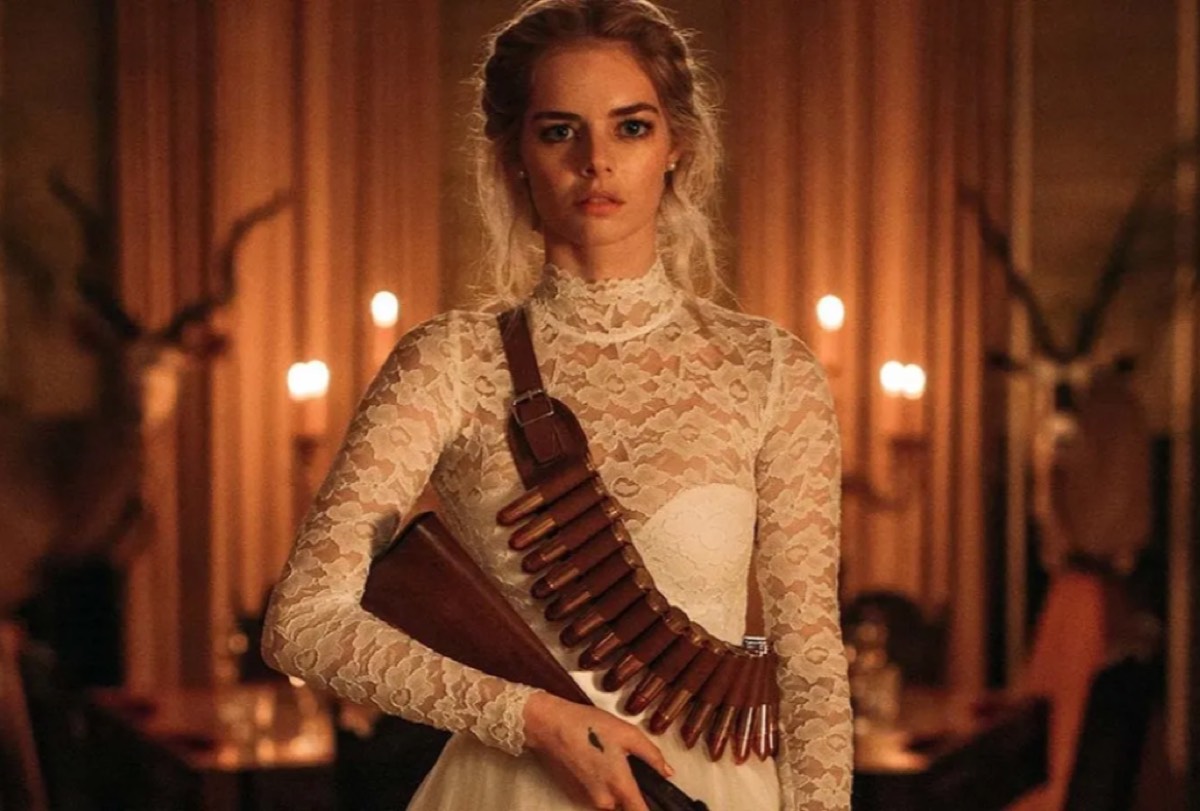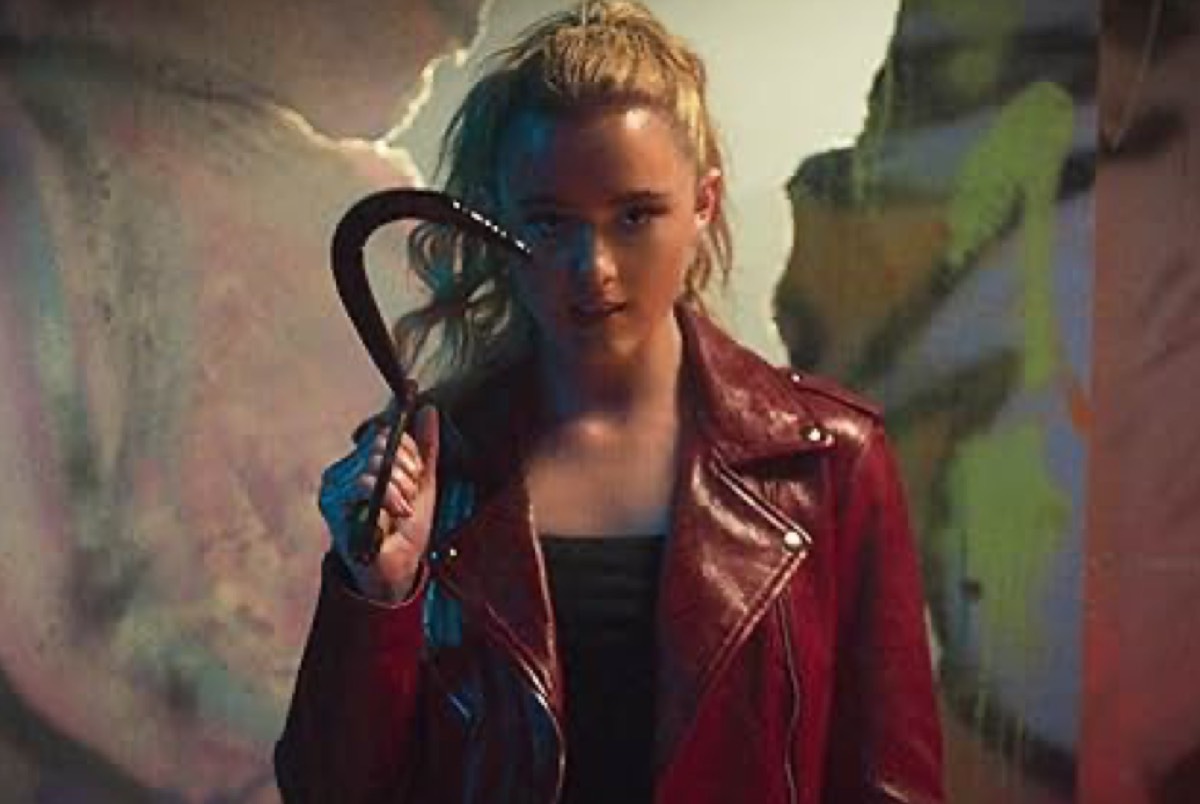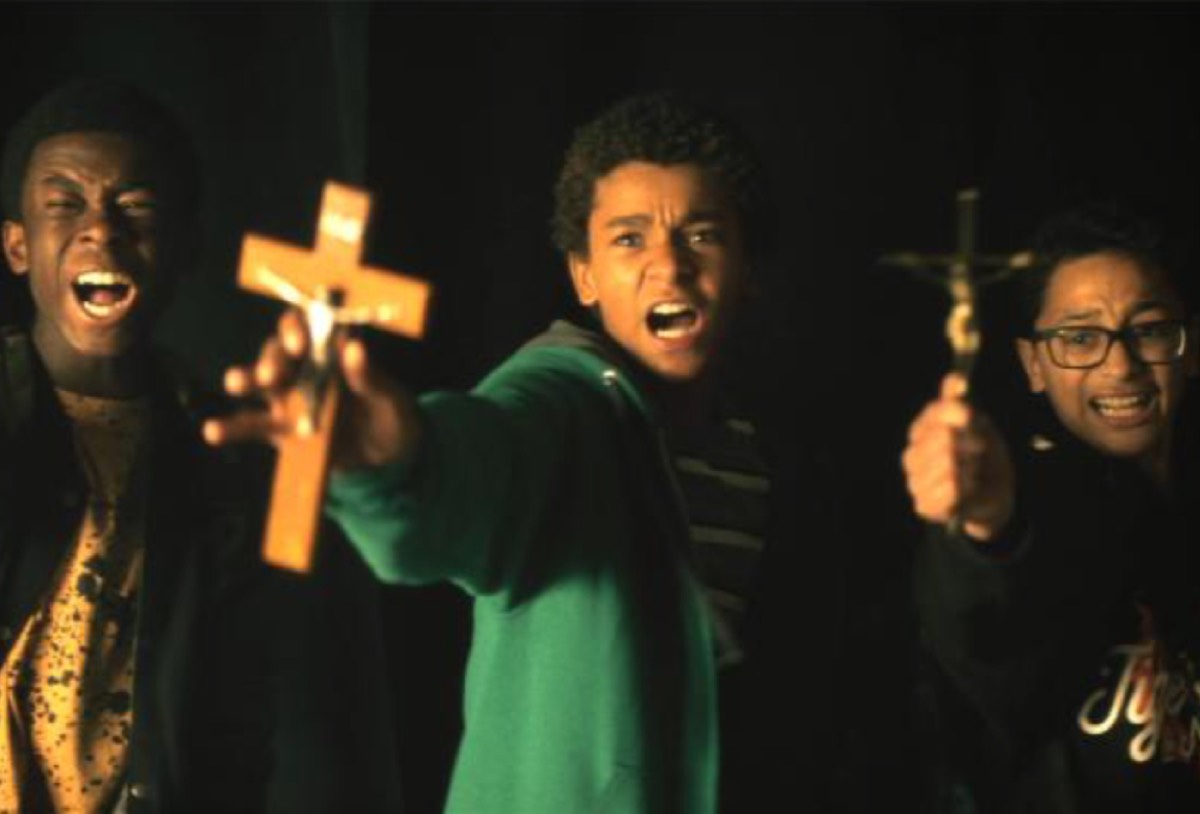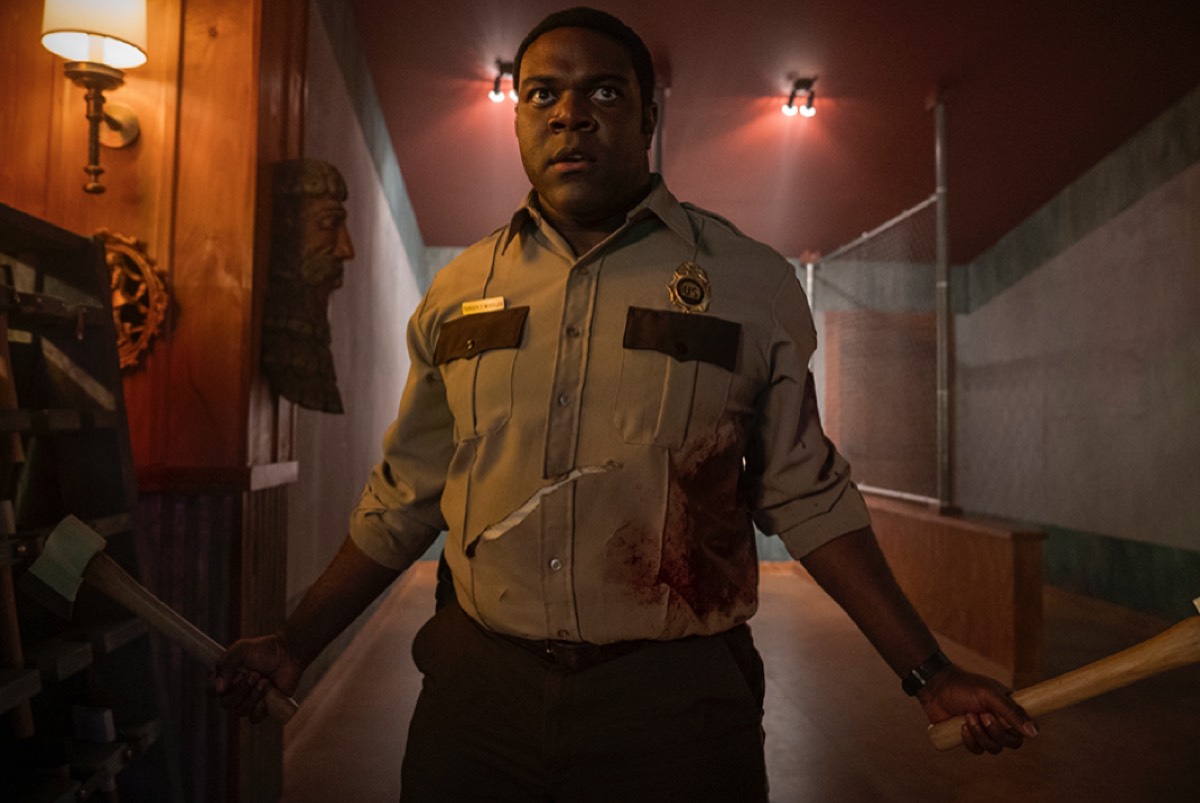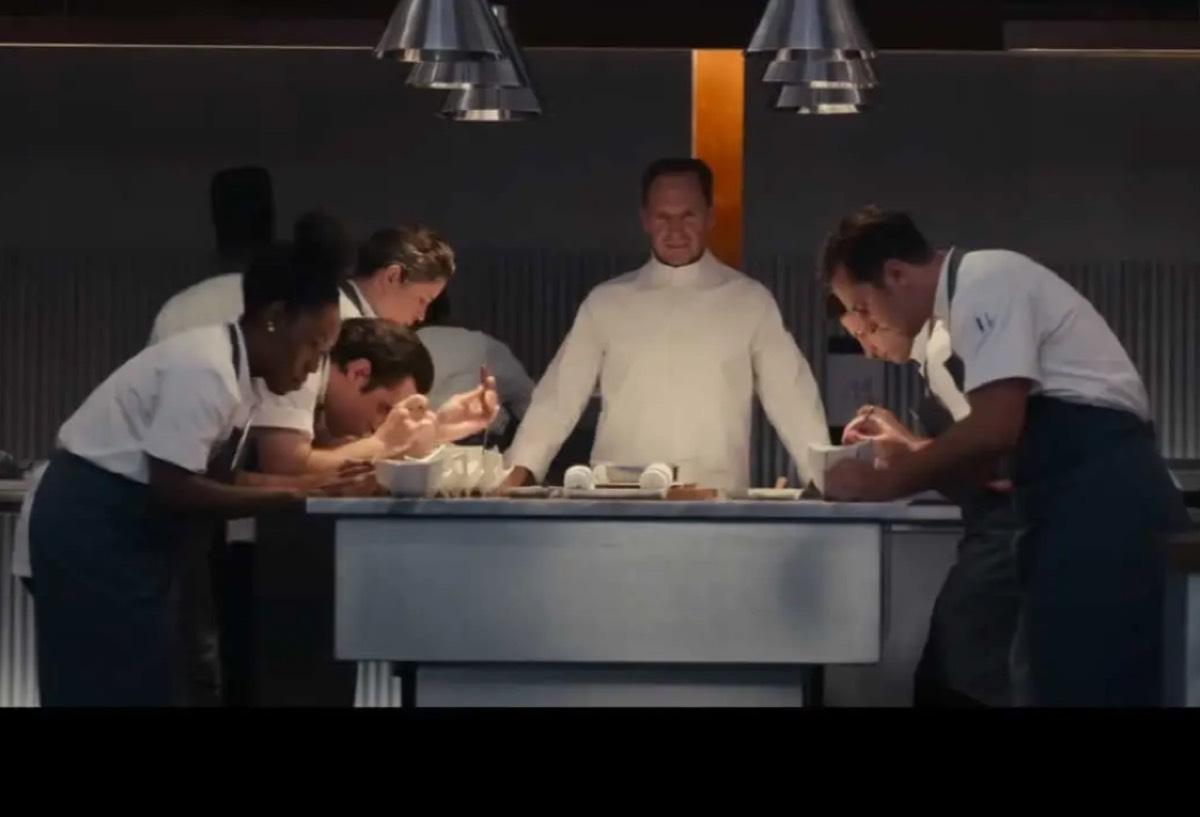Vampires and werewolves and zombies, oh my! Plus a slasher smorgasbord of serial killers…
Halloween is upon us, which means costumes, candy, and settling in for a nice long night of scary movies. For those who crave a bit of humor with their blood-soaked scares, I’ve compiled a list of some of my favorite horror comedies for your viewing pleasure.
What constitutes a horror comedy? Is it merging classic creature features with goofy slapstick humor? Is it primarily super scary with a few notes of humor? Is the humor sharply satirical or primarily delivered by wisecracking characters? Is it parody? Or does good horror comedy go full meta, poking fun at the tropes while sneaking in incisive cultural commentary?
Horror comedy is all of those things and more, which is why picking films to include on this list proved so tricky. For instance, The Mummy (1999) features a classic monster, but it fits just as well in the action/comedy category, while Ghostbusters (1984) is pretty much straight-up comedy. Yet I could have included both on this list without too many complaints. In the end, I cut the list down to 20, opting for a sampler that features blockbusters, vintage films, cult classics, and contemporary offerings, each with its own unique mix of horror and comedic elements. Feel free to add your own favorites in the comments.
(Some spoilers below.)
Abbott and Costello Meet Frankenstein (1948)
Credit: Universal Pictures
Famed comedic duo Bud Abbott and Lou Costello were on the verge of splitting up when they signed on to make Abbott and Costello Meet Frankenstein, which made for a rather fraught shoot. Director Charles Barton once described them as “the real monsters” on set. But they still created a horror comedy for the ages that is included in the Library of Congress National Film Registry.
Bela Lugosi’s Count Dracula teams up with a mad scientist (Lenore Aubert) to reactivate Frankenstein’s monster (Glenn Strange). And who should have the ideal brain for those purposes? A baggage clerk named Wilbur Grey (Costello), whose BFF Chick Young (Abbott) joins him to foil the plot. Lon Chaney Jr.’s Wolf Man also makes an appearance, and Vincent Price briefly voices the Invisible Man, setting up a slew of sequels that never quite matched the giddy heights of the first.
Theater of Blood (1973)
Credit: United Artists
Vincent Price built his storied career on making horror movies, House of Wax and several Edgar Allan Poe adaptations among them. But my all-time favorite is Theater of Blood, in which Price plays an aging Shakespearean actor named Edward Lionheart. When his final season is ridiculed by the snobby Theater Critics Guild, Lionheart throws himself into the Thames. He is rescued by vagrants and, having gone mad, proceeds to exact revenge on the members of the Guild by knocking them off, each in a manner inspired by a Shakespeare play.
One is stabbed to death by a mob (Julius Caesar); another is decapitated while sleeping (Cymbeline); yet another is drowned in a “butt of Malmsey” wine, just like the Duke of Clarence in Richard III. A flamboyant gourmand is forced to eat pies made from his beloved toy poodles (Titus Andronicus), while Lionheart lures a female critic to a hair salon, posing as a groovy hairdresser who can’t wait to get his hands on her “dishy, dishy hair”—but electrocutes her in the hair dryer instead, a la Joan of Arc in Henry IV, Part I. And let’s just say that Lionheart takes the mention of a pound of flesh in The Merchant of Venice quite literally. Theater of Blood revels in its campiness, and Price’s over-the-top scene-chewing melodrama makes the movie. It’s grimly funny with a hint of pathos and never lapses into outright farce.
Young Frankenstein (1974)
Credit: 20th Century Fox
Young Frankenstein marks its 50th anniversary this year: five decades of sheer joy rendered by a constant stream of bad puns, double entendres, slapstick visual gags, and a goofy musical number—all to create an affectionate, timeless tribute to the classic Frankenstein movies of the 1930s. It’s even shot in black and white, with old-school opening credits and filmmaking techniques, as well as featuring the original lab equipment designed for 1931’s Frankenstein.
Gene Wilder stars as Dr. Frederick Frankenstein, a lecturer at a US medical school who is ashamed of his infamous grandfather, Victor, to the point where he deliberately pronounces his last name differently (“It’s FRONK-en-steen”). But then he inherits the family’s Transylvania estate and takes leave of his fiancée, Elizabeth (Madeline Kahn), to pay a visit. There he meets the hunchback Igor (Marty Feldman); housekeeper Frau Blücher (Chloris Leachman); and comely lab assistant Inga (the late, great Teri Garr). After discovering his grandfather’s notebooks, Frederick decides to continue his work, creating The Monster (Peter Boyle), whose impressive physical dimensions include an “enormous Schwanzstucker.” With all that comedic talent, small wonder the Oscar-nominated Young Frankenstein also has a place in the Library of Congress National Film Registry.
An American Werewolf in London (1981)
Credit: Universal Pictures
Writer/director John Landis was ahead of his time when he first pitched the script for An American Werewolf in London in 1969. It was deemed not scary enough to be horror and not funny enough to be a comedy, so Landis shelved the idea for over 10 years. Hollywood culture finally caught up and Landis got to make his film, having since risen to fame with such hits as Animal House and The Blues Brothers.
David Naughton stars as David Kessler, a US graduate student who treks across the Yorkshire moors with his best friend Jack (Griffin Dunne), only to be attacked by a mysterious creature. Jack is killed and David is bitten, waking up in a London hospital. As the full moon approaches, David starts experiencing some changes, finally transforming into a werewolf and embarking on a couple of killing sprees. He falls in love with his nurse, Alex (Jenny Agutter), but is also haunted by repeated visions of the mauled (and gradually decomposing) Jack, warning him that until he dies, Jack and all his other victims are doomed to an undead existence in limbo. At one point, Jack appears to David in an adult movie theater and introduces him to the cheery young couple he killed the night before, who helpfully offer suicide tips.
The humor is more clever than funny, and there are some genuine scares. There’s also a good amount of gore, although not as much as Landis originally planned; he had to cut certain details to get an R rating, like Jack trying to eat a piece of toast and having it fall out of his decaying neck. It’s the famous long transformation scene that made the most waves, using what were then groundbreaking makeup and visual effects. In fact, it won the Oscar for Best Makeup that year.
Little Shop of Horrors (1986)
Credit: Warner Bros.
This one is an adaptation of a hit off-Broadway musical that was, in turn, an adaptation of the 1960 horror comedy directed by Roger Corman. Little Shop of Horrors stars Rick Moranis as Seymour Krelborn, a floral shop employee in love with his co-worker, Audrey (Ellen Greene), who is also being pursued by a sadistic dentist addicted to nitrous oxide (Steve Martin). The discovery of an exotic sentient plant that Seymour names Audrey II helps boost business, but Seymour discovers it needs human flesh and blood to survive… and the bigger the insatiable Audrey II grows, the more blood she needs (“Feed me, Seymour!”).
Director Frank Oz used animatronic puppetry to create Audrey II, eschewing blue screens or other visual effects. He wasn’t particularly happy with his final Oscar-nominated film, mostly because the studio forced him to scrap the musical’s original ending, in which Seymour and Audrey both die and Audrey II and her alien plant offspring ravage the Earth. Critics and audiences didn’t mind the more upbeat ending, however, no doubt won over by the catchy tunes and deft mix of campy humor and horror.
Evil Dead II (1987)
This franchise made Bruce Campbell a horror-comedy icon. Credit: Renaissance Pictures
Sam Raimi’s blood-soaked trilogy made Bruce Campbell a horror icon, and Evil Dead II is arguably the best of the lot (although I also have a soft spot for Army of Darkness). Whether it’s a remake of the original Evil Dead or a sequel is a matter of debate; honestly, it’s a bit of both. Campbell stars as Ash Williams, a college student who takes his girlfriend on a romantic getaway to an abandoned cabin in the woods. They discover that the former owner, an archaeologist, left behind a “book of the dead” (Necronomicon Ex-Mortis) and commit the fatal error of reading some of the passages out loud.
This unleashes a Kandarian Demon that kills and possesses his girlfriend, turning her into a “Deadite.” Ash is forced to decapitate her and ends up battling multiple Deadite victims of the demon, cutting off his own arm when his right hand becomes possessed. The moment when a blooded Ash straps a modified chainsaw to the stump and mows down a bunch of deadites is a scene for the ages. It’s got a rough, low-budget energy, smirking humor, and enough blood and gore to fuel three average horror movies—a bona fide “comedy of terrors.”
Tremors (1990)
Earl and Val realize the threat is underground. Credit: Universal Pictures
Tremors is an unabashed love letter to the B-movie creature features of the 1950s that remains as fresh today as it was over three decades ago. The film is sheer perfection and ranks among my personal favorite films of all time. The story takes place in the tiny fictional desert town of Perfection, Nevada—population 15, at least at the start of the film. But something begins killing the residents (and the livestock). Director Ron Underwood set the narrative up like a mystery, introducing us to the main characters and setting as they realize the threat that is coming for them: subterranean monsters dubbed “graboids.”
Tremors has a terrific cast of characters, played by gifted actors. But it’s the ingenious design of the graboids that really makes the film for me—how the characters figure out the monsters’ characteristics. Above all, the graboids are smart and capable of learning about their human prey and adapting accordingly. When humans hide in a car, they dig around the surrounding soil so the whole vehicle sinks underground. They do the same thing to loosen building foundations when the residents take refuge on their roofs. They dig a trap just as the humans are almost safely to the mountains, and so forth. The humans have to keep upping their game to survive, and the ingenious ways they outwit the monsters is a huge part of the film’s delight.
Scream (1996)
Credit: Dimension Films
No horror comedy list would be complete without including the oh-so-meta Scream, which introduced the costumed serial killer Ghostface to the world. Scream deftly deconstructs the slasher genre and its surprisingly moralistic “rules,” helpfully defined by horror fan Randy (Jamie Kennedy): no drinking, doing drugs, or having sex—the Final Girl, Sidney (Neve Campbell), is naturally a virgin—and also never, ever leave your friend group and tell them you’ll “be right back.” (You won’t.) Naturally, all of these rules are broken by one character or another, with the expected bloody results.
The humor is self-referential without being parody; the performances are strong; and the jump scares and horror tributes are plentiful (Linda Blair of The Exorcist fame makes a cameo). Those elements helped the film tap into the cultural zeitgeist of the mid-1990s, blasting past low box office projections to gross $173 million worldwide. Scream has spawned multiple sequels, an anthology film series, and the Scary Movie horror parody franchise, revitalizing what was at the time a stagnating market for horror. It’s now widely viewed as one of the most influential horror movies of all time.
Shaun of the Dead (2004)
Credit: Universal Pictures
Shaun of the Dead is the first film in Simon Pegg’s Three Flavors Cornetto trilogy, in which Pegg’s Shaun, a mild-mannered slacker London salesman, finds himself caught up in a zombie apocalypse and must rise to the occasion to save his friends and family. That includes his best friend Ed (Nick Frost), girlfriend Liz (Kate Ashfield), mom Barbara (Penelope Wilton), and stepdad Philip (Bill Nighy), as well as Liz’s roommates, David (Dylan Moran) and Diane (Lucy Davis).
Shaun is an unlikely hero; Liz has broken up with him because he’s unambitious and spends all his free time playing video games with Ed or hanging out at the Winchester pub. The film is about this everyman finding his inner hero. He and Ed hurl vinyl records at a pair of zombies—pausing to quibble over which ones they should preserve—and take out even more brain-eaters with cricket bats. At one point the crew pretends to be zombies to make their way to the Winchester for a final showdown. But their little group is wildly outnumbered, and while Shaun of the Dead is very funny with its distinctively British humor, it’s also sometimes downright heartbreaking. That’s a fine line to navigate, and Pegg does so exceptionally well.
Zombieland (2009)
Credit: Sony Pictures
Zombieland is America’s answer to Shaun of the Dead: a fresh, fun take on the “zom-com” format. A virulent form of human-adapted mad cow disease sweeps across the United States, transforming most of the nation’s populace into ravenous zombies. The film follows a ragtag group of unlikely survivors—Columbus (Jesse Eisenberg), Tallahassee (Woody Harrelson), and orphaned sisters Wichita (Emma Stone) and Little Rock (Abigail Breslin)—on a road trip in hopes of finding some place yet untouched by the disease, ending with a pitched battle against zombie hordes in an abandoned amusement park.
It’s a fun mix of horror and dark screwball comedy, especially the “Zombie Kills of the Week” and Columbus’ hilarious survival rules—cardio, limber up, beware of bathrooms, and buckle up, for instance, not to mention the “double tap”—often illustrated by various doomed souls who failed to heed those rules. Bill Murray’s star turn playing himself just might rank as one of the best surprise cameos of all time. The 2019 sequel, Zombieland: Double Tap, didn’t quite hit the same high marks, but the pair still make for a terrific double feature.
Trollhunter (2010)
Credit: SF Norge A/S
This quirky Norwegian offering is shot in the style of a found footage mockumentary. A group of college students set off into the wilds of the fjord land to make a documentary about a suspected bear poacher named Hans, played by Norwegian comedian Otto Jesperson. They discover that Hans and another hunter named Finn (Hans Morten Hansen) are actually hunting down trolls and decide to document those endeavors instead. They soon realize they are very much out of their depth.
Writer/director André Øvredal infuses Trollhunter with myriad references to Norwegian culture, especially its folklore and fairy tales surrounding trolls. There are woodland trolls and mountain trolls, some with tails, some with multiple heads. They turn to stone when exposed to sunlight—which is why one of the troll hunters carries around a powerful UV lamp—and mostly eat rocks but can develop a taste for human flesh, and they can smell the blood of a Christian. The film is peppered with dry wit rather than laugh-out-loud moments, and non-Norwegians might miss some of the cultural in-jokes. But Øvredal masterfully builds suspense and a creeping sense of dread, plus there’s all that gorgeous footage of the Norwegian landscape to delight viewers around the world.
The Cabin in the Woods (2012)
Credit: Lionsgate
When will college students learn to avoid weekend getaways to remote wilderness locations? The Cabin in the Woods is in a similar vein to Scream, but Joss Whedon and Drew Goddard definitely put their unique stamp on this satirical ode to the slasher genre. In this case, the five students are lured to the titular cabin by technicians working for a mysterious corporation located in an underground facility. It’s not initially clear what the operation is about, but failure is not an option. The technicians manipulate the students via careful staging and mind-altering drugs, among other tricks, until they accidentally summon a zombified family of sadists who start killing off the students.
That is all according to plan. And just when you think that’s all the movie has to offer, it takes a sudden, unexpected, and very bold lurch into outright Lovecraftian horror—the less said about that, the better, particularly the jaw-dropping finale featuring a cameo by Sigourney Weaver as The Director. The Cabin in the Woods goes places horror comedies have rarely gone before, and it does so with considerable wit and flair.
What We Do in the Shadows (2014)
Credit: Madman Entertainment
Taika Waititi and Jemaine Clement wrote, directed, and starred in the delightfully offbeat What We Do in the Shadows, playing vampire roommates Vladislav (Clement) and Viago (Waititi) in Wellington, New Zealand. Given their nocturnal nature, they and their vampire friends haven’t adapted to modern life particularly well, and their mishaps as they struggle to navigate mundane trivialities in the 21st century are the source of much of the film’s deadpan humor.
The rather circuitous plot culminates with our underdogs attending the annual Unholy Masquerade and battling several rival vampires, as well as a pack of werewolves. What We Do in the Shadows garnered a solid cult following after premiering at the Sundance Film Festival, ultimately earning $6.9 million—a decent showing given its modest $1.6 million budget. And it spawned a successful TV spinoff, now in its final season.
Happy Death Day (2017)
Credit: Universal Pictures
Happy Death Day is basically a combination of Scream and Groundhog Day, in which sorority sister Theresa “Tree” Gelbman (Jessica Rothe) is murdered on her birthday by a killer in a Babyface mask and finds herself reliving that day over and over. (Babyface is the fictional Bayfield University’s mascot, and they should really rethink that choice.) She takes advantage of the time loop to solve her own murder and maybe get some closure over some personal trauma in her past. Bonus: She also snags a nice guy boyfriend, Carter (Israel Broussard). There’s even an overt nod to Groundhog Day at one point, with Tree confessing that she’s never seen the film. Pair it with the entertaining sequel, Happy Death Day 2 U, which adds a multiverse twist and pays particular homage to Back to the Future II.
Get Out (2017)
Credit: Universal Pictures
At its core, Jordan Peele’s Get Out is a subtle exploration of racial tensions that quietly builds to reveal its horrifying premise and inevitable bloody conclusion. But it’s also packed with sly, smartly satirical humor, hence its inclusion on this list. Chris (Daniel Kaluuya) is a Black photographer who is meeting his girlfriend Rose’s (Alison Williams) stereotypically liberal white family for the first time at their upstate home. At first things are merely awkward, as they clumsily try to bond with Chris by using the word “thang” and reassuring him that they would have totally voted for Obama a third time. Concurrently with Chris’ visit, the family is hosting a party in honor of her late grandfather, which involves hordes of clueless old white people. We learn that it is not a coincidence as the film gradually veers from satire into sinister psychological horror.
Kaluuya is terrific at playing Chris’ transition from bemusement to terror, and Williams is pitch-perfect as a suburban white girl who just doesn’t get why he’s so on edge. As Chris is drawn more deeply into the bizarro secret at the heart of Rose’s family, we get a series of reveals that are pleasingly unexpected. And Lil Rel Howery steals every scene as Chris’ best friend, a TSA agent who is suspicious about the weekend getaway and ends up saving the day—because the TSA “gets st done.”
One kind of terrible conspiracy gives way to another, and the final truth is far more complicated than what you’d expect from a typical horror movie. The narrative pacing is perfection: You’ll see the twists coming right when Peele wants you to see them. As Annalee Newitz wrote in her 2017 review, “Writing good satire is hard, but writing good horror-satire requires exquisite timing. It’s been a long time since a movie took me from laughing to abject horror in five minutes flat. Peele and his cast sell us on both the silliness and creepiness, and they make it so intense that the final moments of white-hot action (heh) are genuinely cathartic.”
Ready or Not (2019)
Credit: Fox Searchlight Pictures
An unsuspecting bride (Samara Weaving) finds herself fighting for her life on her wedding night in this wickedly funny, blood-soaked thriller. Weaving plays Grace, who marries Alex Le Domas (Mark O’Brien), a member of a wealthy gaming dynasty, in a picture-perfect wedding on the family estate. Then she learns that at midnight, she must play a game to officially join the family by drawing a card from a mysterious box to choose the game. She gets Hide and Seek. Grace is the prey, and she must evade detection until dawn to avoid being killed in a bizarre ritual sacrifice.
Ready or Not gets the tone just right throughout, perfectly balanced between humor and horror. Relative newcomer Weaving, in particular, delivers a standout performance as Grace—a role that requires her to be, in turn, sweetly submissive, shocked, and terrified, and a tough-as-nails badass in a fight for her life. Moments like brother-in-law Fitch Bradley (Kristian Bruun) watching YouTube videos on “Getting To Know Your Crossbow” provide comic relief and make those genuinely shocking bloody twists all the more effective. The pacing is crisp, the narrative is tight, it’s genuinely suspenseful, and the entire cast is clearly having a blast in their respective roles.
Freaky (2020)
Credit: Universal Pictures
In Freaky, an homage to Friday the 13th (1980) and slasher films like Scream, Vince Vaughn stars as an aging serial killer who switches bodies with a hapless teenage girl named Millie (Kathryn Newton). The success of the body-swapping concept in any given film always rests on the shoulders of its leads, who must nimbly switch between characters. Vaughn and Newton do not disappoint.
Vaughn especially shines at channeling his inner teenage girl, despite his hulking 6-foot, 5-inch frame—and not just in the obvious slapstick moments, like when he performs the Blissfield High mascot dance to convince Millie’s best friends that it’s really him. He also brings out Millie’s sweet vulnerability and aptly conveys her delight at being able to pee standing up. On the flip side, The Butcher in Millie’s body shows a surprisingly keen fashion sense and relishes being able to slide under everybody’s radar as an “innocent” high school student. The cast is clearly having a blast, and Freaky ultimately succeeds in mixing horror, humor, and pathos in just the right measures.
Vampires vs. The Bronx (2020)
Credit: Netflix
The title of this charming, smart horror-comedy pretty much says it all. Tween-age Miguel Martinez, aka “Lil Mayor” (Jaden Michael), is trying to organize a neighborhood block party in the Bronx to save the local bodega from rising rents in the wake of gentrification. One company in particular, Murnau Properties, is buying up local businesses at an alarming rate, and the former owners keep mysteriously disappearing. It’s assumed they cashed in and moved to the suburbs—but the fact that the company’s logo is an image of Vlad the Impaler (associated with Dracula in popular culture) is a strong hint that something more sinister is afoot.
When Miguel witnesses a vampire killing firsthand, he recruits his BFFs Bobby (Gerald W. Jones III) and Luis (Gregory Diaz IV) to discover the vampire nest and take out the bloodsuckers. Miguel and his plucky gang prove to be formidable opponents, so vampires in search of easy territorial pickings would do well to heed local livestream sensation Gloria’s closing words: “You don’t want no smoke with the BX.” If the Goonies battled vampires in the Bronx, this would be that movie.
Werewolves Within (2021)
Credit: IFC Films
Werewolves Within is a warmly satirical horror comedy loosely based on the Ubisoft multiplayer VR game of the same name. The VR game is essentially a social deduction game, where players take on cartoon avatars, sit in a virtual circle, and try to guess which of them is the werewolf terrorizing a medieval village. Werewolves Within updates the setting to a contemporary mountain town in the Hudson Valley, but it’s the same premise: the people of Beaverfield have to figure out which one of their quirky neighbors is a lying, murdering werewolf.
Director Josh Ruben sets the cheekily irreverent tone right off the bat, playing a deep cut from 1959, “The Phantom Strikes Again,” as Finn Wheeler (Sam Richardson) arrives in Beaverfield to take up his new post as the local park ranger. The ridiculously talented cast members all possess the skills and onscreen ensemble chemistry to make the script come alive. Granted, the characters aren’t especially deep—more akin to what you’d find in the best sketch comedy—but that suits the film’s tone. And there is a moral to the tale, courtesy of Finn and his role model, Mister Rogers: that at its heart, the town is a community, despite their differences, and everyone is at their best when they remember their common humanity.
The Menu (2022)
Credit: Searchlight Pictures
At the highest echelon of fine dining, a multi-course meal can attain a level of theatricality that elevates it to performance art. In the case of horror/comedy The Menu, it’s a particularly macabre kind of performance art. Ralph Fiennes stars as Julian Slowik, a disillusioned celebrity chef who presides over a fictional molecular gastronomy restaurant called Hawthorne, located on an exclusive private island. Chef Slowik invites a select group of guests for a very special dinner, but the presence of Margo (Anya Taylor-Joy) as a last-minute substitute throws a wrench into his carefully planned revenge.
This is a subculture that presents an easy target for cheap shots, but The Menu opts for sharp, scalpel precision in its satire. Its barbs often leave the viewer speechless with delight, like the bread course served without anything so pedestrian as actual bread, just the fancy accoutrements—and a pinot noir with “notes of longing and regret.” Director Mark Mylod masterfully controls the tone throughout, beginning with odd passive-aggressive comments from Chef Slowik and his staff (“You will eat less than you desire and more than you deserve”) before escalating into outright horror. Margo has joined the ranks of the best Final Girls in horror. And despite the horror elements, Mylod never sacrifices the biting comedy that makes this film such a delectable pleasure.
Jennifer is a senior reporter at Ars Technica with a particular focus on where science meets culture, covering everything from physics and related interdisciplinary topics to her favorite films and TV series. Jennifer lives in Baltimore with her spouse, physicist Sean M. Carroll, and their two cats, Ariel and Caliban.
